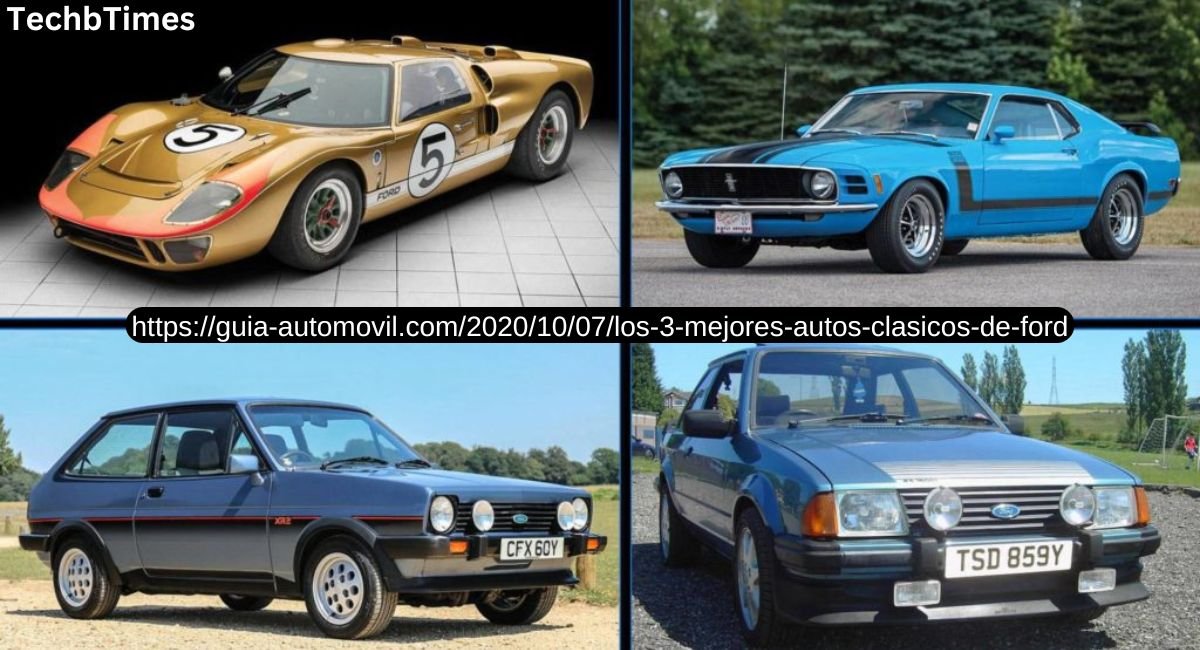Ford has a rich history of crafting vehicles that have become icons in the automotive world. Among its numerous classic models, “los 3 mejores autos clásicos de Ford” stand out for their innovation, style, and cultural impact. These vehicles have defined eras, inspired generations, and continue to hold a special place in the hearts of car enthusiasts worldwide.
In this article, we delve into the stories behind the Ford Model T, the Ford Mustang, and the Ford GT40, celebrating their contributions to the automotive legacy.
Ford Model T: The Car That Changed the World
The Ford Model T, often referred to as the “Tin Lizzie,” is a cornerstone of Ford’s history. Introduced in 1908, it revolutionized transportation by making automobiles affordable for the average person.
Why It’s One of the Best:
- Mass Production: The Model T was the first car to be mass-produced using an assembly line, reducing costs significantly.
- Reliability: Designed to endure rugged terrain, it became a trusted companion for early motorists.
- Cultural Impact: By 1927, over 15 million units were sold, making it a symbol of the automotive revolution.
The Model T’s simplicity and practicality continue to inspire admiration, earning its spot among “los 3 mejores autos clásicos de Ford.”
Ford Mustang: The Birth of the Pony Car
First unveiled in 1964, the Ford Mustang redefined the sports car segment with its affordability, performance, and style. Its instant popularity led to the creation of the “pony car” category, characterized by compact, performance-oriented vehicles.
Why It’s One of the Best:
- Iconic Design: Its long hood and short rear deck set the standard for sporty aesthetics.
- Customization Options: Buyers could choose from a range of engines, trims, and colors, making it highly personalized.
- Cultural Significance: Featured in films like Bullitt and Gone in 60 Seconds, the Mustang became a cultural icon.
Even today, the Mustang remains a beloved nameplate, embodying the spirit of freedom and innovation.
Ford GT40: A Racing Legend
When Ford set out to dominate the racing world in the 1960s, the GT40 was born. Designed to compete at the prestigious 24 Hours of Le Mans, it achieved legendary status by defeating Ferrari and securing four consecutive wins from 1966 to 1969.
Why It’s One of the Best:
- Unparalleled Performance: Equipped with a powerful V8 engine, it delivered exceptional speed and endurance.
- Aerodynamic Design: Its low profile and sleek lines were optimized for racing success.
- Historic Wins: The GT40’s victories at Le Mans remain some of the most celebrated moments in motorsport history.
The GT40’s legacy lives on through modern iterations like the Ford GT, which pays homage to this racing icon.
Why These Cars Define “Los 3 Mejores Autos Clásicos de Ford”
The Ford Model T, Ford Mustang, and Ford GT40 are more than just cars; they are milestones in automotive history. Each represents a unique facet of Ford’s legacy: accessibility, innovation, and performance.
- The Model T democratized mobility and set the stage for mass automobile production.
- The Mustang captured the imagination of car enthusiasts with its style and versatility.
- The GT40 showcased Ford’s engineering prowess on the global stage.
Conclusion
“https://guia-automovil.com/2020/10/07/los-3-mejores-autos-clasicos-de-ford” exemplify the brand’s commitment to innovation, performance, and cultural impact. From revolutionizing transportation with the Model T to dominating the racetrack with the GT40 and inspiring car lovers with the Mustang, these classics have left an indelible mark on the automotive world.
Whether you’re a history buff, a racing enthusiast, or simply someone who appreciates timeless design, these vehicles offer a glimpse into Ford’s unparalleled legacy.












